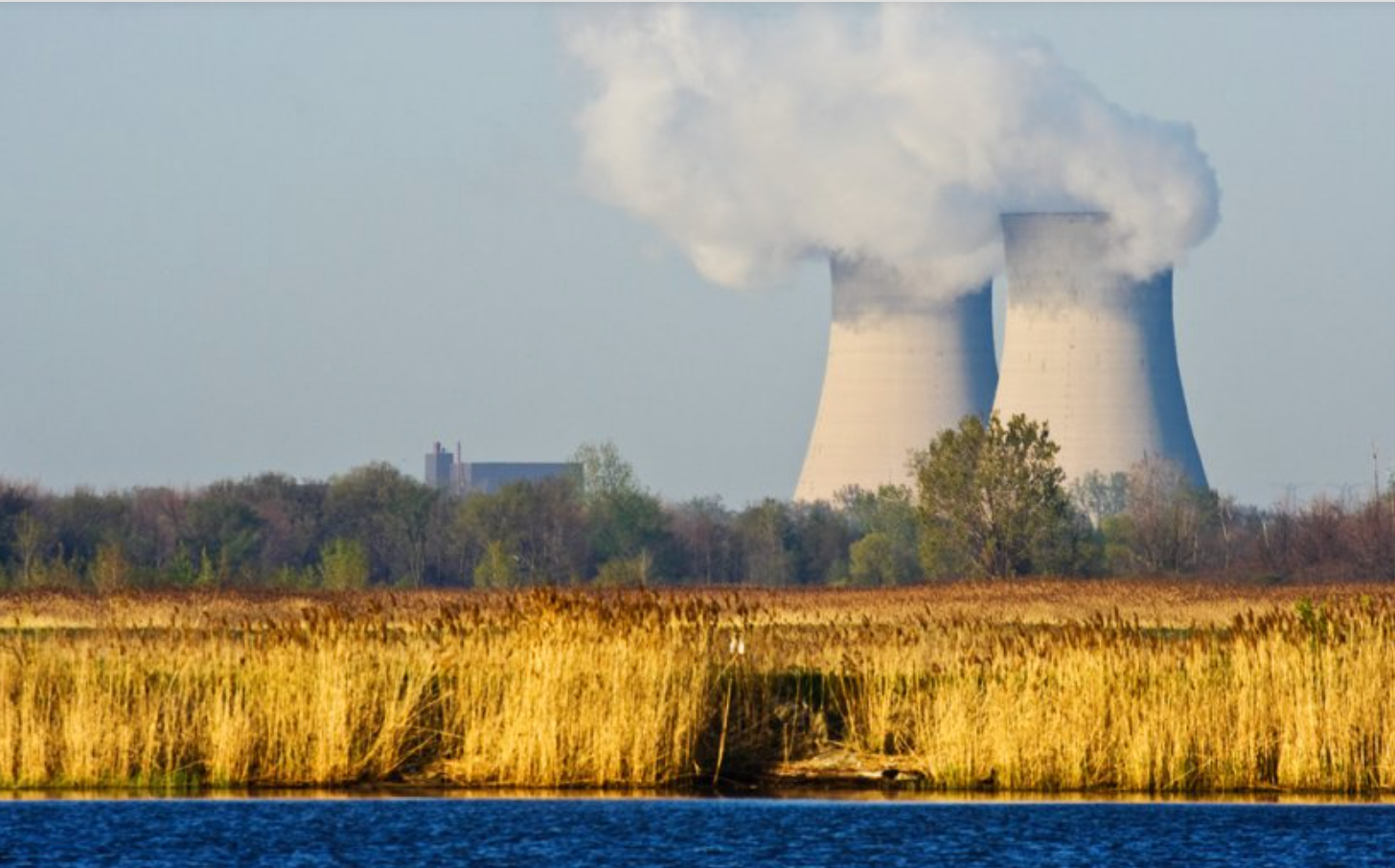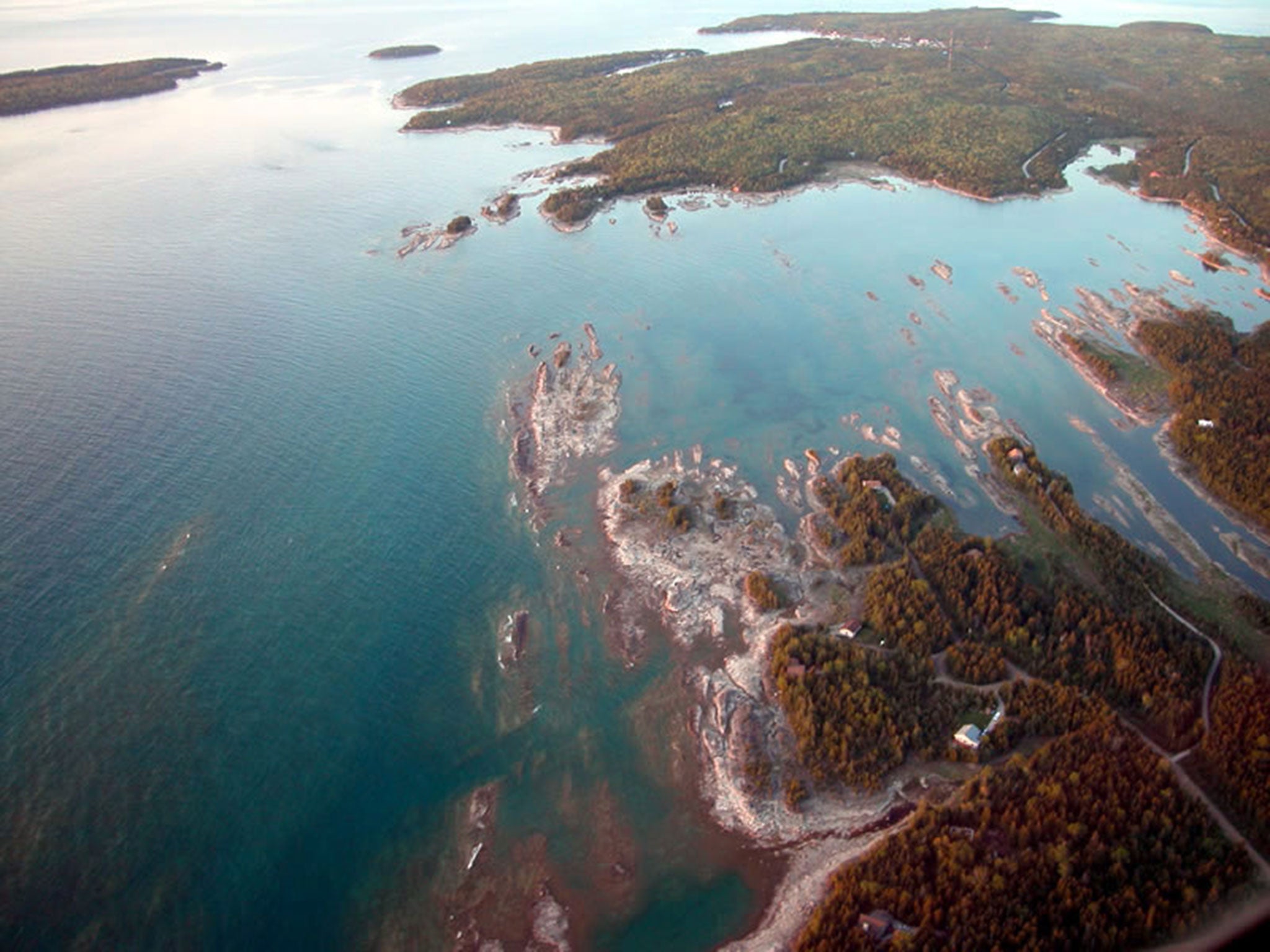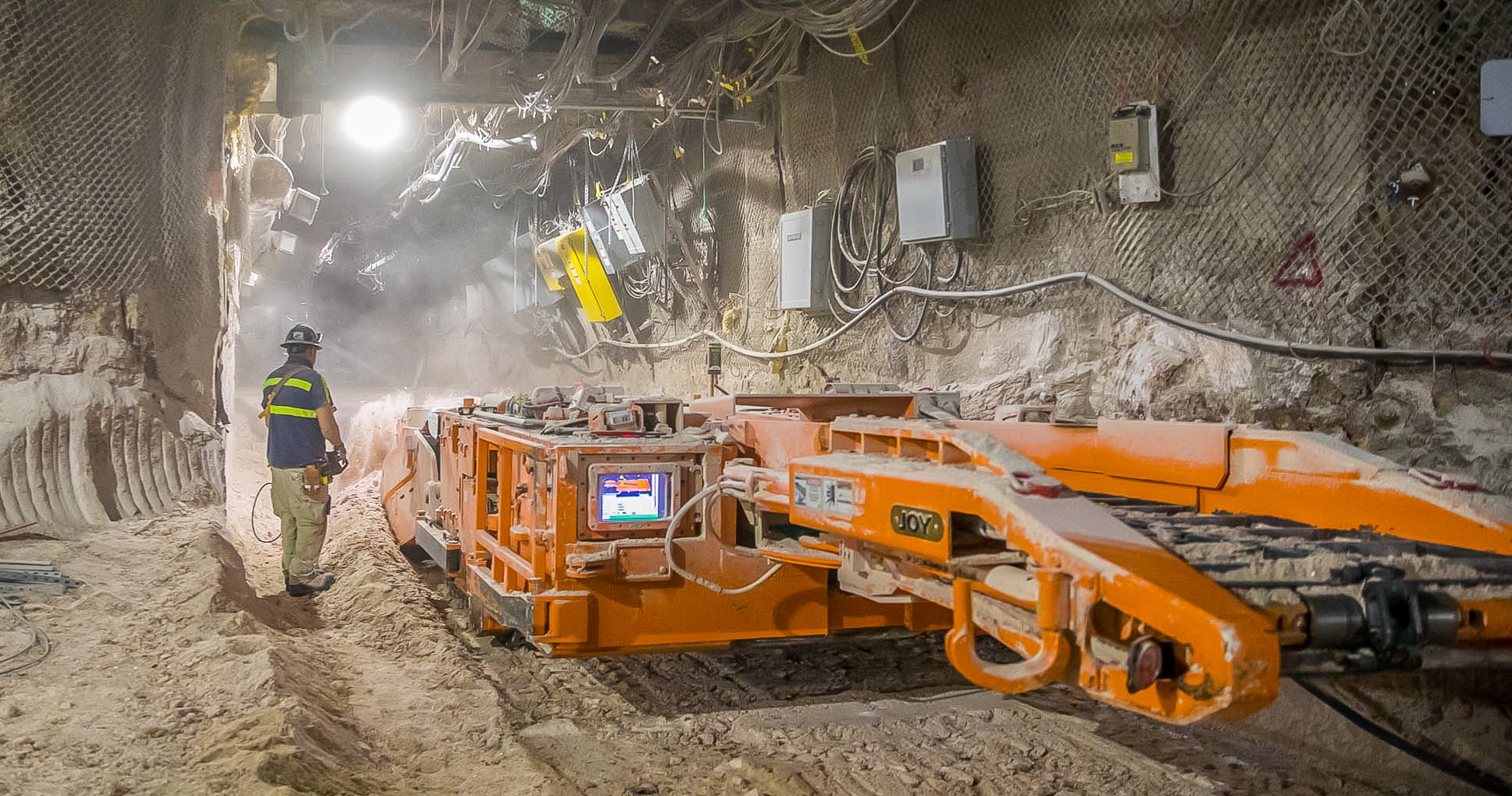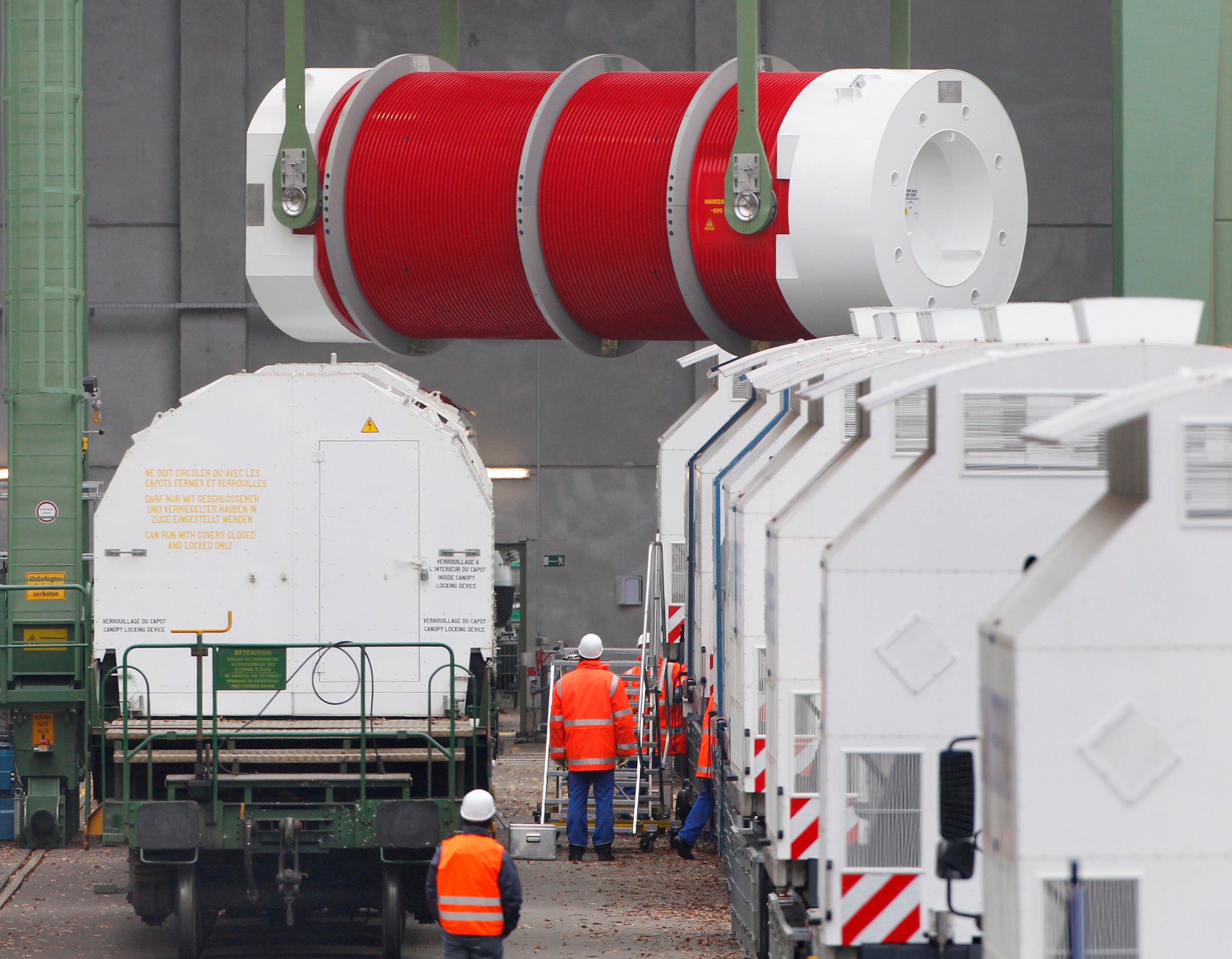Race to block burial of nuclear waste by the Great Lakes over fear of tainting crucial fresh water supply
There’s only one legal underground ‘geologic’ nuclear waste storage facility in the world. Another proposed site, on the US-Canada border and just miles from the Great Lakes, is sparking controversy, writes Sheila Flynn

Your support helps us to tell the story
From reproductive rights to climate change to Big Tech, The Independent is on the ground when the story is developing. Whether it's investigating the financials of Elon Musk's pro-Trump PAC or producing our latest documentary, 'The A Word', which shines a light on the American women fighting for reproductive rights, we know how important it is to parse out the facts from the messaging.
At such a critical moment in US history, we need reporters on the ground. Your donation allows us to keep sending journalists to speak to both sides of the story.
The Independent is trusted by Americans across the entire political spectrum. And unlike many other quality news outlets, we choose not to lock Americans out of our reporting and analysis with paywalls. We believe quality journalism should be available to everyone, paid for by those who can afford it.
Your support makes all the difference.Nuclear spent fuel. Radioactivity. Uranium. There could hardly be words scarier for any community, no matter its size or location.
And those words have been sparking panic in towns on both sides of the US-Canada border for years - as plans progress for one of the only sanctioned geologic repository sites internationally to house nuclear waste.
The proposed site is in South Bruce, Ontario, just 30 miles from Lake Huron - which provides drinking water to millions of Canadians and Americans. Last week, Michigan senators registered their latest complaint about the facility, which is estimated to cost billions and take decades to construct - still a far cry from the thousands of years it takes for radioactive material to become safe.
“Placing a nuclear waste facility next to one of the world’s largest supplies of fresh water makes absolutely no sense and is dangerous,” Michigan Sen. Debbie Stabenow said following the resolution signed by co-sponsors and fellow Democrats Gary Peters, also of Michigan; Tammy Baldwin, of Wisconsin; Amy Klobuchar, of Minnesota; Dick Durbin, of Illinois; Tammy Duckworth, of Illinois; Sherrod Brown, of Ohio; and Kirsten Gillibrand, of New York.
All of those senators’ states border at least one of the Great Lakes.
“Our Great Lakes are central to our Michigan way of life, and any nuclear waste spill would be devastating. I strongly urge our Canadian neighbors to make the right choice and stop any plans to store nuclear waste so close to the Great Lakes,” Sen. Stabenow continued.
She was echoed by her fellow Michigan senator, Gary Peters.
“It’s simple: hazardous nuclear waste should not be stored anywhere near the Great Lakes. Not only do they provide drinking water to millions of Americans and Canadians – they are also an economic and ecological treasure,” he said. “Any accident could be long-term and catastrophic – and could directly threaten the health and well-being of Michiganders. I strongly oppose this proposal from the Canadian government and urge them to reconsider.”

A deep geologic repository (DGR), according to the United States Nuclear Regulatory Commission, is an “excavated, underground facility that is designed, constructed, and operated for safe and secure permanent disposal of high-level radioactive waste.
“A geological repository uses an engineered barrier system and a portion of the site’s natural geology, hydrology, and geochemical systems to isolate the radioactivity of the waste,” the USNRC states on its website.
There are different types of nuclear waste, however.
“One of them is commercial spent nuclear fuel, and that’s what the Canadian reactors tend to produce, and that’s what commercial power plants produce,” Peter Burns, director of the Center for Sustainable Energy at the University of Notre Dame, tells The Independent. “That’s one category of waste, and it’s treated very differently from the other major category, which is military.”
It’s military nuclear waste that’s currently being stored in the only operational legal site internationally at the moment, an underground facility located in Carlsbad, New Mexico. Other waste tends to be stored above ground in dry-cask storage in the US, he says, as authorities figure out what to do with it - leading to a whole other set of problems.
At sites such as San Onofre in San Diego, for example, local communities routinely fret about everything from leaks to natural disasters that would unleash the toxic waste into the environment.
“Canada doesn’t have any military nuclear waste - lucky them,” Prof Burns says. The waste it hopes to store - and there’s an estimated three million bundles of spent fuel across the country, according to Canadian reports - would be of the commercial nature.

The contentious border site would be located near the small town of Teeswater in South Bruce, Ontario; another Ontario township, Ignace, has also been a front-runner over years of debate. The region is no stranger to nuclear facilities; the Bruce Nuclear Generating Station on Lake Huron is the largest nuclear power plant in North America.
“In Canada, there’s this process that’s been trundling along for years to narrow down a possible site for a repository,” Prof Burns says, adding: “The intent of the repository is to retain the radioactive material until it has decayed to not radioactive - and the regulatory timeframe can vary, depending on the country. I’ve seen a timeframe of 10,000 years and one I’ve seen as high as a million.”
He continues: “There’s a very detailed process of review, and with scientific and engineering models ... that demonstrate that the repository will meet the regulatory requirements, I think I’m very comfortable with the Canadian system progressing through that process - and I believe that, if the regulators approve the repository, we don’t have anything to worry about.”
Professor Burns is Canadian himself, and the Notre Dame campus in Indiana is about the same distance from Lake Michigan as the proposed nuclear waste site is from Lake Huron. But the waste site selection’s geologic makeup is of the utmost importance when it comes to safety, he tells The Independent.
“The real key to a geologic repository is: the geology itself is the main barrier relative to the release into the biosphere,” he says. “One wants to have a waste forum that is chemically stable in the repository conditions. That’s a really good place to start.”
He adds: “You would need a lot of radioactivity to somehow find its way out of that repository through 30km of solid rock and into the lake to have an impact.”
That’s unlikely, says Prof Burns and other experts – though that’s of little comfort to communities, and politicians on both sides of the border are wielding the controversy as a powerful political tool.
Almost exactly two years ago, a “fraught” council meeting was being held in Ontario about the implementation of a DGR or more than one in the area – in “an argument that has already played out at dinner tables, arenas and coffee shops in the area for years, dividing neighbours and leaving communities deeply polarized,” CBC reported.
"I am strongly opposed," Brockton Mayor Chris Peabody said in February 2020.
"The proposal is to bury the waste under the Teeswater River," he told a council meeting. "I can’t support that. I’ve got several communities down river that get their drinking water from aquifers along that river."
Grassroots efforts have sprung up against the proposals, even though Canada is not set to decide on a site until at least next year. The divisions about DRGs have been fueled not only by fear but by money, economics, environmental concerns – and rhetoric.
Many, still, are afraid to voice their opinions in the tight-knit populations.
“We’re a small community, so everybody knows everybody,” Michelle Stein, chair of Protect Our Waterways, told the Globe and Mail last summer. “There’s a lot of people who are scared to say that they think this nuclear waste facility is a bad idea because they don’t want their neighbour angry at them.”
Prof Burns, meanwhile, argues that the storage of nuclear waste – when done properly, legally and according to protocol – is vastly safer than byproducts of other fuel sources.

“We know exactly where every single [nuclear] fuel rod is, and they’re all safely contained while awaiting permanent disposal,” he says, adding: “Except for cost, it has no impact on human health. There’s an international, a very broad international, consensus that developed that geologic disposal is the best way to go in terms of dealing with the waste.”
It’s one thing to say that; it’s another to stem the fears of millions who live in the storage facility’s backyard with their families – and politicians have been stoking that terror.
“Protecting and preserving the Great Lakes is not just an environmental goal, it is an economic necessity for Wisconsin,” Wisconsin’s Sen. Baldwin said last week. “Our Great Lakes provide fresh water for drinking and are a critical part of our economy, helping support good-paying jobs in tourism, recreation, transportation, and trade. We do not want Canada permanently storing nuclear waste in the Great Lakes Basin, and the President and Secretary of State should make that clear to Canada.”
Across the border, however, Canadian authorities are making moves to allay the concerns of residents near the proposed site. It should also not be overlooked that the South Bruce region put itself forward as a candidate for the facility as experts were canvassing – with local officials hopeful the storage site would bring jobs, benefits and prosperity for decades to come.
Earlier this month, the Nuclear Waste Management Organization (NWMO) announced it had developed a programme to protect the value of properties around the potential site – in response to landowners freaking out about the effects of such a storage facility in the region and on prices.
“In general, property values in South Bruce – and across the region – have appreciated over the years, and we expect adding a multi-billion-dollar environmental infrastructure project to the landscape would continue this trend for years to come,” said Justin Wallbott, NWMO manager of real estate services, in a release on the non-profit’s site.
“That said, the Property Value Protection (PVP) program was developed to offer landowners confidence in terms of property value.”
Again, though, the opponents remain resolute.
“For years, communities across the US have been forced to house nuclear waste, despite the significant negative social and economic impacts,” Illinois Sen. Duckworth said following last week’s resolution.
“I agree that we need a long term storage solution for nuclear waste but the Great Lakes region, an absolutely vital water resource for millions of Americans, should not be that solution.”
Join our commenting forum
Join thought-provoking conversations, follow other Independent readers and see their replies
Comments